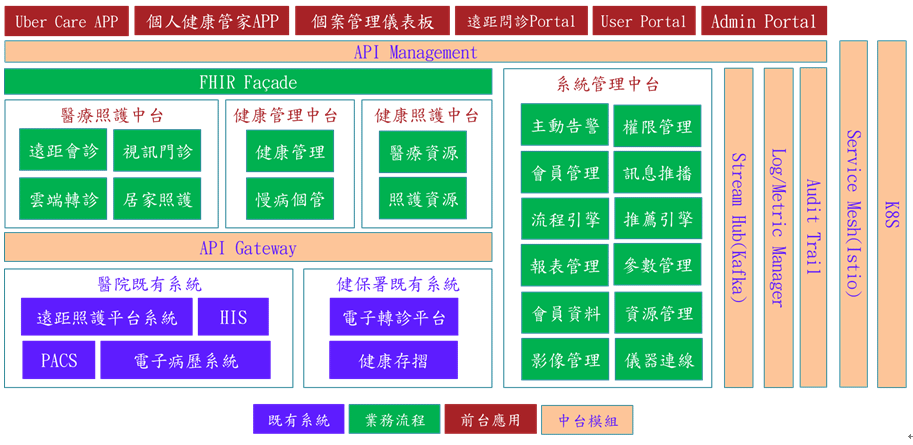Using microservice architecture to build a modern healthcare system, and combining emerging technologies such as IoT and smart sensor technology, an IoMT smart hospital platform is provided for physiological data monitoring using smart sensors and medical devices. Healthcare field monitoring is also developed, and manpower dispatch is performed in real-time when emergencies occur, increasing mobility. Using big data applications as an example, a medical data platform is provided, integrating clinical medical big data and combining with a medical situation center to present it in a visualized dashboard, developing patient-centered medical services.
● Building a modern healthcare system using a microservices architecture
Use case: System operation by physicians in the consultation room.

Using a microservices architecture to build a modern healthcare system, providing healthcare services such as teleconsultation, video consultations, cloud-based referrals, home care, health management, chronic disease management, as well as health care resource and care resource inspections. K8S is used in conjunction with management tools such as alerting tools, permission management, message push, report management, resource management, etc., to help clarify and streamline the medical process. Building a modern healthcare system using a microservices architecture will provide virtualization, flexibility, system source code control, version unification, hospital system integration, and event-driven transformation, which can automatically notify of abnormalities, effectively addressing potential technical problems with existing systems such as outdated development versions, excessive repetitive code, overly large associated databases, inability to share system architecture, asynchronous programming codes across different hospital campuses, and the difficulty of maintaining large servers and passive demands.
Remote Outpatient Applications
Application scenario: Remote video consultations for home-based patients and hospitals.
With the COVID-19 pandemic resurging, remote video consultations have become particularly important. With the assistance of video technology, home-based patients do not need to go to physical hospitals. This reduces the time spent on transportation and lowers the risk of contact and infection between people. In addition, remote consultations use web browsers for video consultations, eliminating the need for intermediary software and reducing complexity, which is more user-friendly for all age groups.
The process for remote video consultations is as follows:
1. After registering, the patient is assigned a virtual consultation room by the system.
2. On the consultation day, the patient logs into the virtual consultation room and waits online.
3. The doctor enters the patient's consultation room in sequence, and both parties start the video call and consultation.
4. After the consultation, pricing, and medication dispensing are carried out by hospital policies.